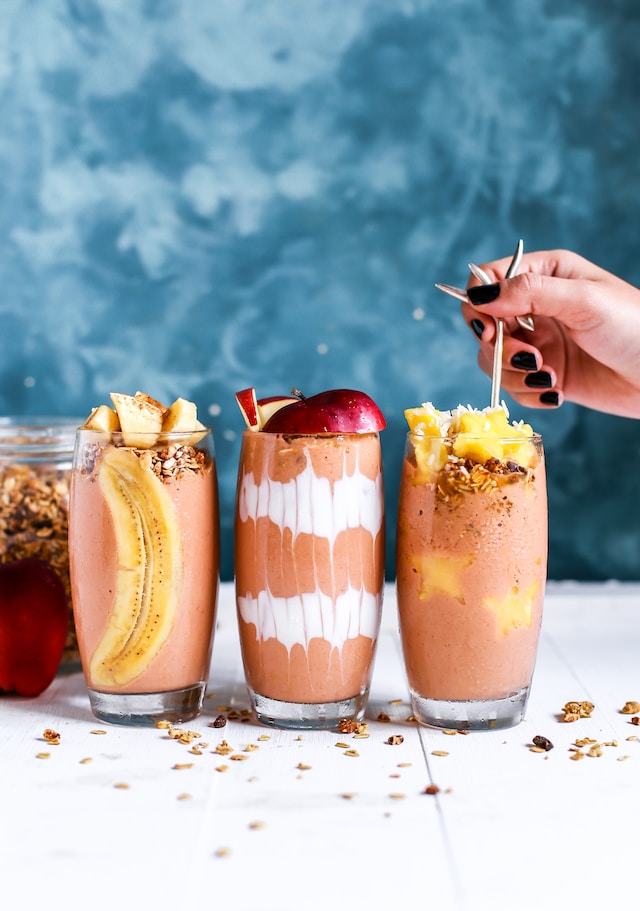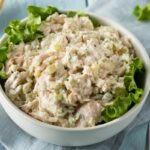We all know that good nutrition is crucial to our health and well-being, but for picky eaters, ensuring a balanced diet can be a significant challenge. Getting sufficient intake of quality protein, an essential macronutrient for muscle repair, immune function, and overall growth, often presents a particular hurdle; if chicken, eggs, and legumes aren’t making the cut with your (frustratingly) finicky eater, then protein powder shakes and smoothies could be the convenient, tasty solution that’s been eluding you, until now.

Photo by Brenda Godinez on Unsplash
Why Protein is Important
Before diving into recipes and tips, let’s underline why protein is so essential:
- Muscle Repair: After physical activity, protein helps in muscle recovery
- Energy: Protein acts as a secondary source of energy after carbohydrates
- Immune Function: Protein aids in the production of antibodies to fight off bacteria and viruses
Choosing the Right Protein Powder
Picky eaters are often sensitive to taste and texture, so choosing the right protein powder to suit their sensibilities can make all the difference. Here are some things to consider:
- Flavor: Opt for neutral flavors like vanilla, or even unflavored varieties that can be easily masked by other, in-favor ingredients
- Type of Protein: Whey is most common, but plant-based options like pea or hemp protein are great for vegans and/or those who are lactose intolerant
- Additives: Look for powders that aren’t crammed with nasty artificial sweeteners or additives; the simpler, the better
Understanding Children’s Protein Needs
Childrens’ protein requirements are somewhat different than those of adults; they are growing rapidly (seemingly by the day at some ages) and need a balanced amount of protein intake to optimally support their developing muscles, tissues, and cognitive functions.
The recommended dietary allowance (RDA) for protein varies by age:
- Ages 1-3: About 13 grams per day
- Ages 4-8: About 19 grams per day
- Ages 9-13: About 34 grams per day
Keep in mind, however, that these are general guidelines only, and an individual kiddo’s needs may well vary. Always consult your pediatrician before introducing any new supplement into your child’s diet – including protein powder.
Children’s Protein Powder: What To Look For
While many protein powders are formulated with adult requirements front and center, several brands do offer protein powder for kids, designed especially with their unique needs in mind. When shopping for a protein powder for your child, look for the following:
- Low in Sugar: Kids are often drawn to sweet flavors (aren’t we all?). Still, excess sugar is not ideal for their health (or ours). Seek out options that use natural sweeteners or have low sugar content – monk fruit or stevia is best
- High-Quality Ingredients: Opt for organic or non-GMO protein powders that don’t contain a plethora of irksome artificial additives or problematic preservatives
- Complete Amino Acid Profile: This ensures that your child gets all the essential amino acids they need for optimal growth and development
Classic Banana Protein Smoothie
Here’s a recipe that’s typically a hit among kids and adults alike:
Ingredients:
- 1 banana
- 1 scoop vanilla protein powder
- 1 cup almond milk
- Ice cubes
- Optional: 1 tablespoon honey for sweetness
Instructions:
- Place all ingredients in a blender
- Blend until smooth
- Serve immediately
Chocolate Peanut Butter Dream

Photo by Indivar Kaushik on Unsplash
For those who can’t resist chocolate (who can?!):
Ingredients:
- 1 scoop chocolate protein powder
- 1 tablespoon peanut butter
- 1 cup almond milk
- Ice cubes
Instructions:
- Combine all ingredients in a blender
- Blend until smooth
- Serve immediately
Tropical Paradise
For a refreshingly fruitier option:
Ingredients:
- 1 cup pineapple chunks (frozen or fresh)
- 1 scoop vanilla protein powder
- 1 cup coconut milk
- Ice cubes
Instructions:
- Add all ingredients to a blender
- Blend until smooth
- Serve immediately
Tips for the Picky Eaters
- Texture Matters: If your picky eater is sensitive to textures (a very common issue), make sure to blend the smoothie thoroughly to eliminate any chunks or grains that could put a sudden, frustratingly stubborn halt to the proceedings!
- Involve Them: Let your picky eater be a part of the process; allowing them to press the blender button or pick out their preferred can make the experience more engaging and fun, helping them to put their sensory issues on the backburner
- Start Small: Don’t overload the smoothie with too many unfamiliar ingredients at once; start with a basic recipe and slowly introduce new flavors as things are going well
- Add-ins: Consider adding nutritional, superfood boosts like chia seeds, flaxseeds, or a handful of spinach, if tolerated. Still, keep your audience in mind; if these additions alter the texture or taste too much, it might be a no-go – progress over perfection!
Sneaky Ways to Add Protein Powder
If your picky eater is a bit (or a lot) resistant to trying new things, here are some sneaky yet effective ways to stealthy muscle in some protein powder when preparing food for them:
- Muffins and Pancakes: Add a scoop of vanilla or unflavored protein powder to your regular pancake or muffin batter – coconut flour is also a great alternative for making gluten-free pancakes
- Oatmeal: Stir in a spoonful of protein powder to a warm bowl of oatmeal, enhancing its nutritional value
- Yogurt Parfaits: Layer fruit, yogurt, and a sprinkle of protein powder for a yummy, nutritious parfait

Homemade Bars and balls: Mix protein powder with oats, nuts, and a drizzle of honey to make your own protein bars or balls
Final Thoughts
Protein powder shakes and smoothies offer up an easy, versatile, and delicious way to pack plenty of essential nutrients into a picky eater’s diet. By selecting the right ingredients and employing some smart (and, if necessary, sneaky) strategies, you can turn mealtime struggles into a fun, easy-going experience with the peace of mind that it’s a nutritious one, too.
- Delicious Cherry Bakewell Cocktail Recipes - October 24, 2023
- Protein Powder Shakes and Smoothies for Picky Eaters: Making Nutrition Fun - September 6, 2023








